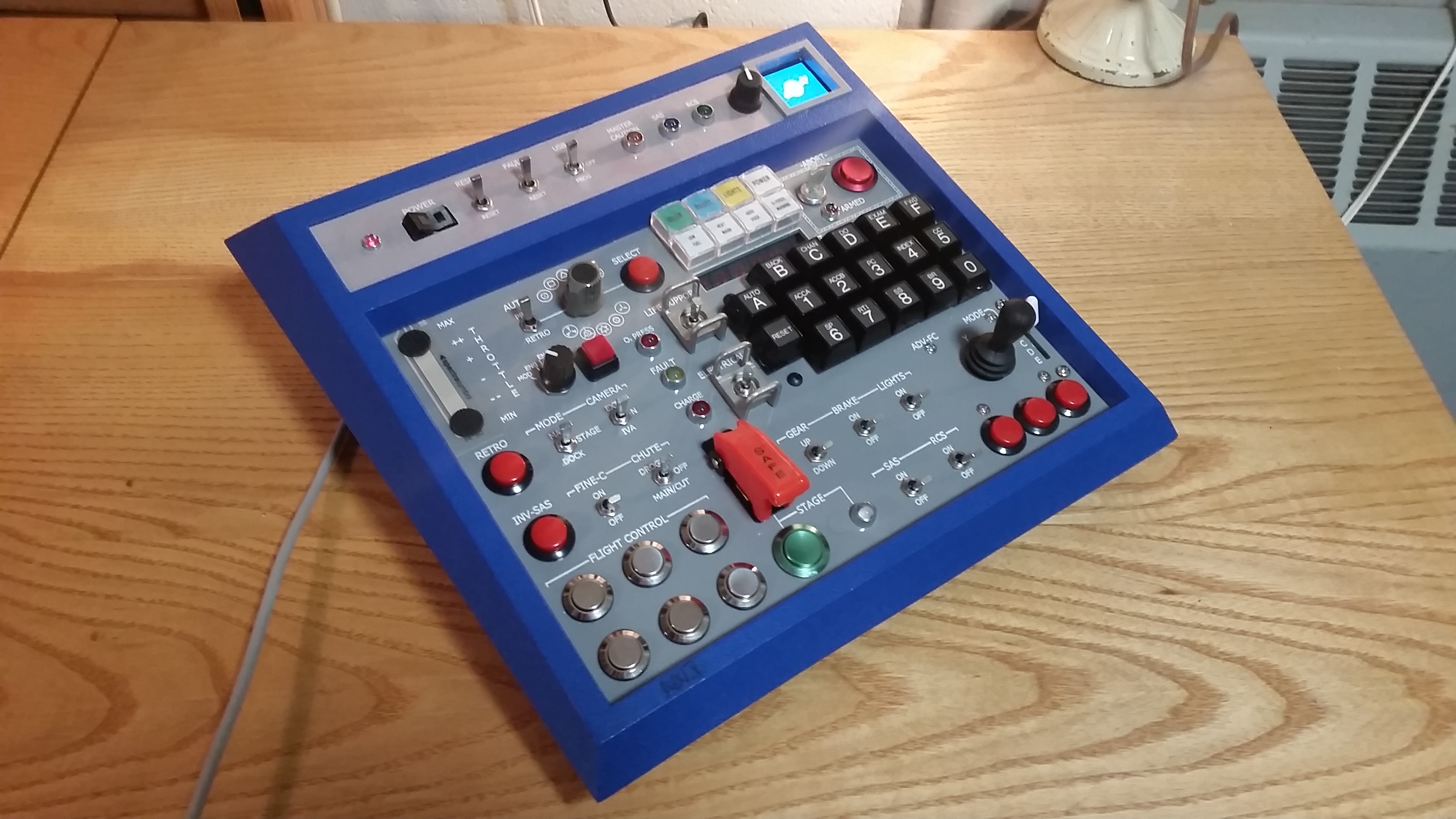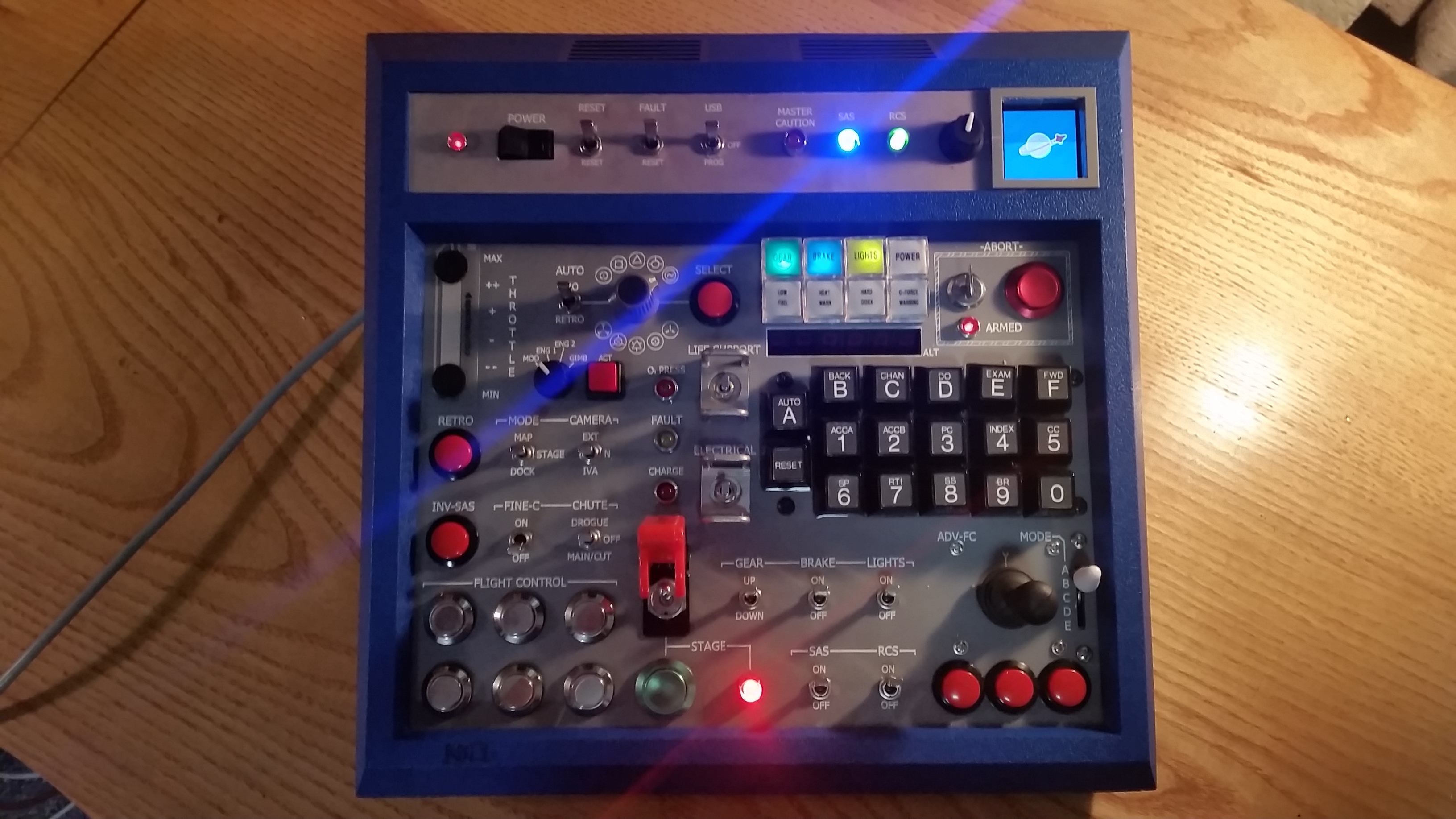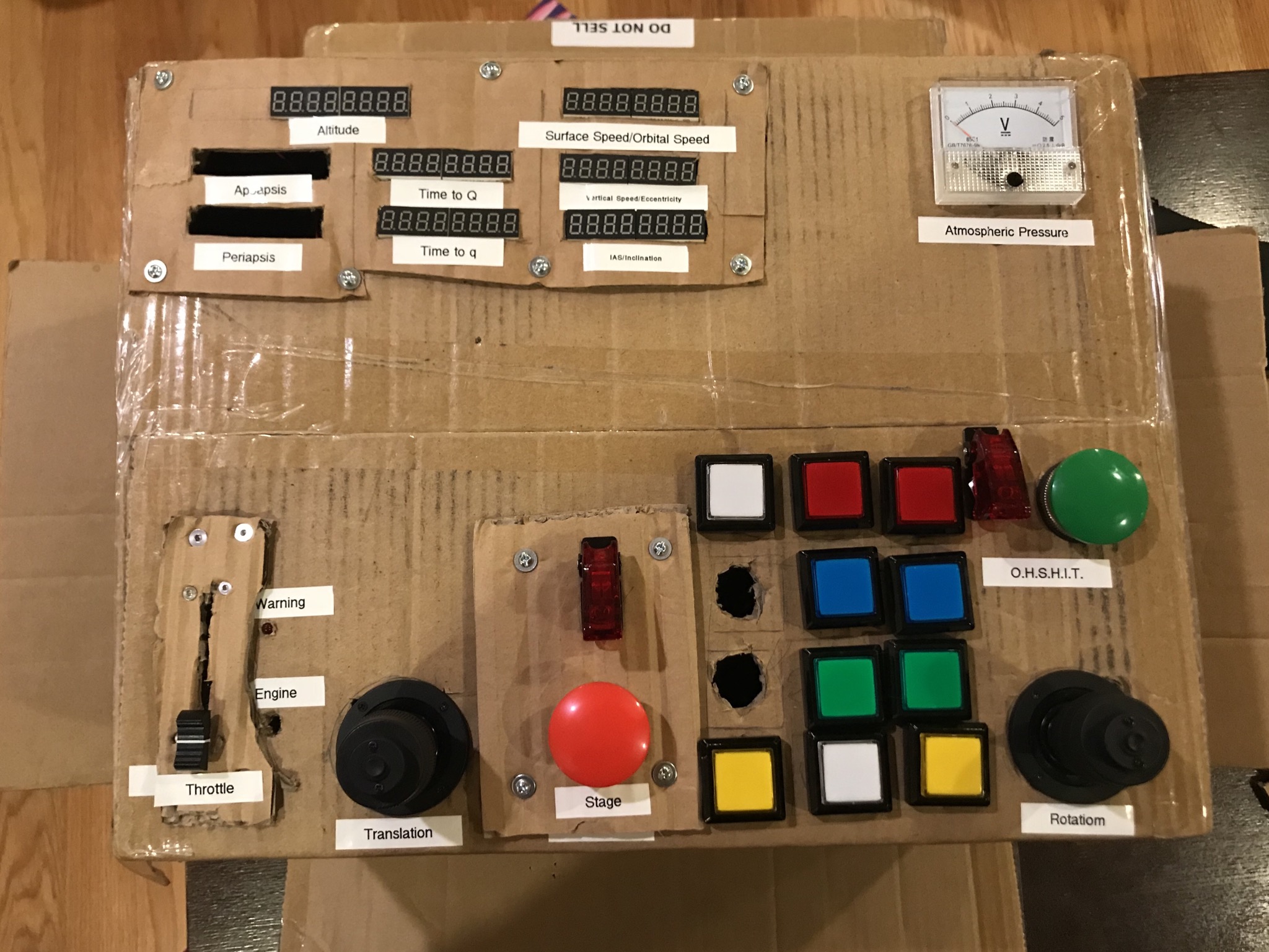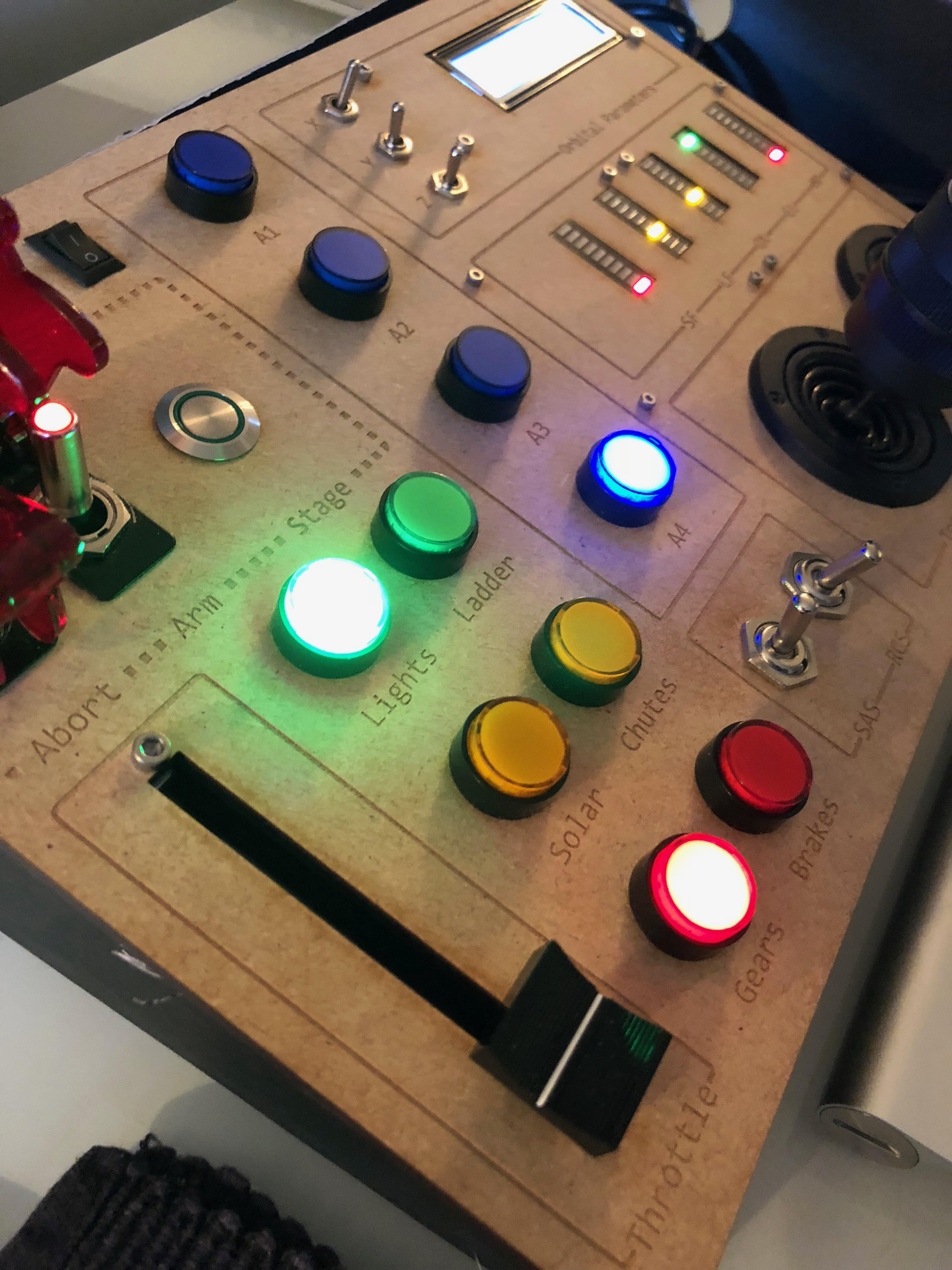The most dedicated Kerbal Space Program players build amazing custom controllers
Control panels fit for a Kerbal space shuttle.

Gaming history is flush with oddball controllers. Mech diehards were enamored with Steel Battalion and its custom controller, an imposing collection of sticks, thrusters, buttons, and LED lights across a multi-sectioned, two foot frame. What do you do when your favorite game doesn't offer such lavish, customized options, though? You build your own.
Enter Kerbal Space Program, a game perfectly crafted to spark a custom cockpit-building obsession. The deep, complex simulation, in short, finds players building an alien space program, learning rudimentary astrophysics, and eventually launching their ships toward the stars.
A Reddit community with more than 1,000 members has formed around custom Kerbal controllers.
For the dedicated, playing Kerbal means recreating reality. Forget Steel Battalion and buying an elaborate control plank—Kerbal die-hards concoct their custom electronics for the sake of total authenticity. Some base their designs on actual NASA hardware. Others reach for cardboard frames to get started, looking for anything to improve their Kerbal sessions. Finding a better way to play, in this case, means whatever it takes.
What's remarkable is the technical diversity of the creators. They don't have much in common, outside a shared interest in space from a young age (and Kerbal, of course). Some come from engineering backgrounds. Others happened upon a build tutorial and gave it a go without any prior electronic experience. It's a hobby for any and all skill levels. All for what's now a seven-year-old sim.

As a freshman in college at the time, Nikolas Gamarra began his build quest after a few years of Kerbal play. A frequent builder of DIY projects, Gamarra found the retro look pleasing. “I am a huge fan of the Apollo program and of 1970s Lego space sets. A lot of the aesthetic choices were drawn from those things. ... I extensively researched past KSP controllers, actual spaceship panels, and switches I wanted to use because I wanted mine to really have that wow factor.”
Gamarra put together a lengthy album of his build progress, which you can see here.
Josh Brown, a licensed plumber, found his inspiration from the 218,000 strong Reddit Kerbal community. “Didn't think anything like this was possible until I saw one posted. Then I looked up KSP serial io and that got me rolling.”
Keep up to date with the most important stories and the best deals, as picked by the PC Gamer team.
IT architect Hugo Peeters also found a hook in the community, but wanted something more his own style. “Many folks try to replicate Apollo controls, but I didn’t. I tried to make it useful to my style of playing. It’s very functional. And I just had to include some of those sexy safety switches. Those make every launch so much more fun.”
Looking over the plethora of designs, building one of these controllers seems costly. A bevy of LED lights, an Arduino open source board, switches, and on and on. Many of these pieces look impressive by themselves. Gamarra's beautiful edges and clean faceplate work looks professional. Peeters' fetching design evokes practicality and looks with laser cut lettering as the topper.
Those who responded stated costs ranging from $150-$300 US dollars, some of that spent on soldering irons and such for the new DIYers. If you're adventurous, it's possible to cut down on that total.
“The case is a recycled educational computer from the 70s,” says Gamarra. “Things like that are one of a kind and sell for a lot online but if you are a hoarder and know the right people you can get them free.” Take a peek at thrifts stores, any second hand shops, or anywhere aging electronics reside. It's worth a shot for any hobbyist. Parts exist everywhere if online prices are a shock to the wallet.
The actual time involved in building a custom Kerbal controller varies wildly. Joyce Mayorga built her current cardboard prototype in her spare time off from her Netflix-based day job. “I took about 2-3 weeks to order all the parts and put what I have together. I wasn’t working on it constantly, just every now and then. Right now, I just have a cardboard prototype with only a few controls hooked up. I probably have a week or so of work until the whole thing is done, barring issues with it.”

Peeters, who stated he never tried anything of this nature before, spread his project out long term. “I got a prototype (built in a shoe box) working in September 2017, working on it several nights a week. Then came a 2-month period of designing the final layout and enclosure, learning how to create a design for laser cutting by watching tutorial videos and ordering parts. In December and halfway into January I built the final controller, again working on it several nights a week and thinking through the remaining steps every waking moment.”

Peeters started out with a shoebox build before learning how to create a pattern for a laser cut build.
The builders I talked to consistently referenced community resources. Peeters posted his process to Instructables, and so did Gamarra. “I made my design freely available on instructables.com so others can re-build it. It seemed only fair since I could never have built this without others sharing their work before me. … I shared my parts list, design files for laser cutting, and code to make it easier for others to attempt. It’s still going to require some problem solving of your own, but that’s half the fun,” says Peeters.
In addition to the standard Kerbal subreddit, an entire Reddit community formed around the controllers themselves, with more than 1,000 members. There, users can ask questions, browse the processes, or even gain the courage to hoist up their soldering iron.
Is it worth it for the longtime Kerbal player? It was for Josh Brown. “It makes the game that much more enjoyable, it not only makes the game easier, but way more immersive and as a result way more fun," he said. And if you're interested in making your own controller, Kerbal community members are there to help, dedicated not only to enhancing their own journeys to the Mun, but also the journeys of others. "It was not that difficult and the community is very helpful in troubleshooting problems," said Brown.

